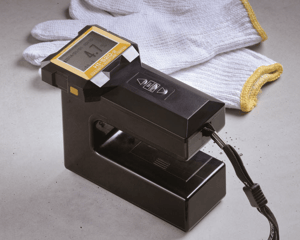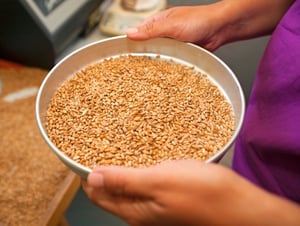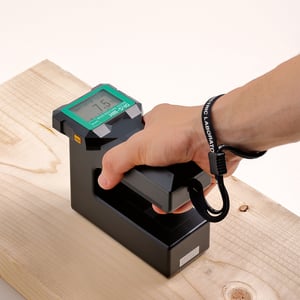 The importance of moisture measurement is well-known; it’s a step in the manufacturing process that helps ensure product quality and performance, and can help reduce costs of shipping and handling. We’ve recently talked a lot about the different methods of measuring, most recently when used for wood products. In this post we’ll continue using wood products as our example to talk about the two most common secondary types of wood moisture meters: pin-style and pinless, and the best practices that help optimize the usefulness of these meters.
The importance of moisture measurement is well-known; it’s a step in the manufacturing process that helps ensure product quality and performance, and can help reduce costs of shipping and handling. We’ve recently talked a lot about the different methods of measuring, most recently when used for wood products. In this post we’ll continue using wood products as our example to talk about the two most common secondary types of wood moisture meters: pin-style and pinless, and the best practices that help optimize the usefulness of these meters.
Pin-style meters feature thin metal probes – almost like needles – that are inserted into the wood to measure moisture content. These probes measure resistance as determined by an electrical signal that passed between the two probes.
Pinless meters do not penetrate the product and instead use radio or electro-magnetic sensors to determine moisture levels.
Both these methods are simple and effective, yet operators often make mistakes that result in inaccurate results (and can even disable the meter). Here are some simple guidelines to follow to ensure you’re getting the most from your pin-style or pinless moisture meter:
Pinless Meters
Know the depth of your meter’s reading. The depth of the reading depends on the particular meter’s make and model, so before using it make sure the depth being read does not extend beyond the product you’re measuring. If you’re measuring flooring that’s ¾ of an inch thick, and your meter reads to a depth of 1 ½ inches, your results include whatever it is beneath the flooring.
Apply the recommended amount of pressure. Again, every device is different, so read the manual that comes with your meter to know how much pressure you should exert on the meter when using a pinless meter. If you’re not pressing hard enough to get the right contact between meter and product, your results will be inaccurate. Likewise, too much pressure could damage the meter.
Pin-style Meters
While durable, the pins on these types of meters are not indestructible and, if too much pressure is applied, can bend or break. Granted, the pins on these meters must be inserted into the wood, which can be tricky especially with hardwoods. Depending on the type of product you’re testing, it can be difficult to insert the pins unless you’re using a type that allow more force to be applied, like hammer probes. The caution here is simple to take your time and not put undo force on the pins.
To get the probes to the right depth in the product takes a fair amount of pressure and many operators, trying to avoid the kind of damage described above, opt to drive the pins in only as far as is “comfortable.” But for measurements to be accurate, you must get the pins into the product to the depth recommended by the manufacturer.
Rather than avoiding measuring altogether or failing to get the pins in to the correct depth, you might consider using a meter that allows you to quickly measure a large amount of wood, like the Kett dielectric meters described in a previous blog post.
Do regular, recommended maintenance. Treating your meter with care will prolong its life and help ensure ongoing accuracy. That means keeping it away from heat (and sunlight) and keeping it away from moisture when not in use. With pin-style meters it’s important to ensure the pin coatings are always intact. Pinless meters have sensors that can become scratched or damaged, so protecting those is important when the meter is not in use.
Calibrate according to manufacturer’s direction. If your calibration is off, your reading will provide little or no value to you. Be sure to follow instructions related to both specifics of the calibration process and recommended frequency to ensure the highest level of accuracy.
Moisture reading is critical, making the proper use and taking care of your meter important, too. To get the most out of your moisture meter, follow the simple guidelines above and that meter will become an invaluable asset in your goal of producing a quality product.
Keep in mind the best practices you follow depend on the type of meter you’re using. While we’re talking about pin-style and pinless meters today, we’ll continue to publish best practices to keep your specific type of equipment in the best possible shape ensuring your readings are always accurate.



